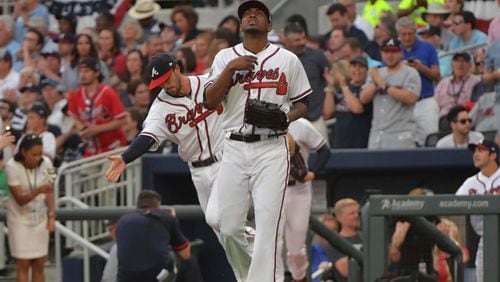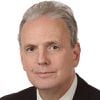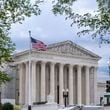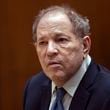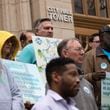On Nov. 11, 2013, Braves patriarch John Schuerholz announced that the club would leave Turner Field for a new stadium in Cobb County. On Sept. 22, 2014, the same Schuerholz announced that the Braves had “terminated” general manager Frank Wren and would endeavor to return to “The Braves Way.” In the course of 10 1/2 months, the Braves had committed to massive rounds of building and rebuilding.
These were separate tracks — Mike Plant and Derek Schiller were doing the stadium stuff, the Two Johns (Hart and Coppolella) the actual baseball — until April 14, 2017, the night the two became one. The team the Johns tore down and reassembled now occupies the house built by Plant/Schiller. In a perfect world, the Braves would have had five years to cultivate and (Schuerholz’s word) curate a new roster for their new home; the Johns had 30 months.
The ideal behind any new stadium: Come for our shiny ballpark, come back (often) to behold our mighty team! That’s not quite the case in Cobb. A franchise rebuilding around young arms is trotting out a rotation 40 percent comprised of pitchers over 40. A team coming off seasons of 95 and 93 losses lists only three players under 30 among its everyday eight. If you set foot in SunTrust Park this month, you might rightly ask: “How exactly is this rebuilding?”
That the Braves have had to deal in half-measures, personnel-wise, is a concession to timetable reality. If not for the new park, the 2017 Braves wouldn’t have so many old players. As ruthless as the Johns have been in their shedding of salary and accumulation of younger/cheaper assets, the last thing anyone associated with the Braves wants is for Year 1 in STP to yield 110 losses.
The Two Johns will never say this for public consumption, but their ballpark forced them to deal in half-measures. In less adroit hands, that might have crashed the system. To their credit, the Johns have triangulated to beat the band.
Remember that trade of lousy contracts in August 2015: Chris Johnson to Cleveland for Nick Swisher and Michael Bourn? That was to clear money — the Swisher/Bourn deals lapsed after last season; Johnson’s runs through the end of this year — for 2017. Such fiscal planning helped the Braves afford Bartolo Colon ($12.5 million) and R.A. Dickey ($10 million) and spare the STP audience the sight of Matt Wisler and Aaron Blair struggling to get anybody out. (The lame-duck audiences at Turner Field got plenty of that last year.)
These half-measures haven’t been half-brained. The Braves’ many old guys aren’t blocking any young guys. The truly prized arms in this system are still teenagers, and Wisler and Blair proved they weren’t yet ready. Nobody expects Colon and Dickey to be here next season. Brandon Phillips, who’s 35 and who was imported for $1 million to keep second base warm until Ozzie Albies gets here, could be gone by July.
Even the biggest luxury among the over-30 set isn’t a developmental obstacle: The hole in the Braves’ top-ranked farm system is the absence of power, which is why Matt Kemp is here. (Also because the Dodgers and Padres are paying $6 million of his $21.7 million salary.)
No rebuild is easy. This was complicated by the need to put something approaching a competitive team on the field by 2017. And if you’re asking, “Couldn’t the Braves have postponed the deep dive until after the move?” … the answer is no. The barren farm system had to be burned down and reseeded. (That took barely two years, which still defies belief.) And we saw, in the cautionary tale of visiting team Friday night, what can happen if you buy big names and go splat.
Two of Coppolella’s best trades were with San Diego, which under new GM A.J. Preller was desperate to make a splash. In the winter before the 2015 season, the Padres added Kemp, Wil Myers, Justin Upton, Craig Kimbrel, James Shields and Derek Norris. Only Myers remains. Preller has since endeavored to restock a farm system he defoliated, but Jace Peterson and Max Fried are working for the Braves. Mallex Smith, acquired for J. Upton, was himself dispatched for the hugely promising pitcher Luiz Gohara.
Apart from Myers, the Padres are a rickety blend of kids and retreads. Through 11 games, they’ve batted .214 (third-worst in baseball) with an ERA of 4.50 (seventh-worst). They look a lot like the Braves did last April — heck, they even have Erick Aybar at shortstop — because they’re a year behind in their rebuild.
The Braves’ starting pitcher on opening day in New York and opening night in Cobb County was Julio Teheran, who has yielded two earned runs in 19 innings. The Padres’ starter on their opening day in Los Angeles and again Friday was Jhoulys Chacin, a journeyman the Braves tried as their No. 5 man last year before trading him after five games. His ERA after three starts is 7.40.
The Braves are walking the fine line of staying true to their process while acknowledging logistical reality. The sight of Chris Sale working Game 1 in SunTrust Park would have been something, but that trade was a non-starter because the White Sox wanted Dansby Swanson. (Everybody does.) The 2017 Braves probably won’t win 80 games, but they shouldn’t lose 100. For where they are and what they’re doing, that should be enough.
